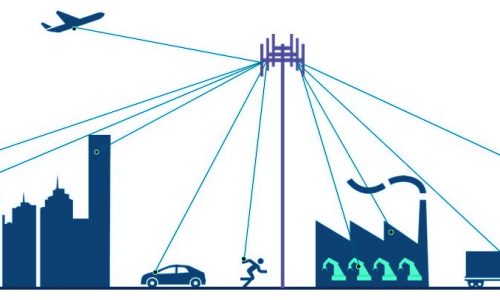Project Managers have to contend with a lot of data and information. Managers coordinate efforts and solve problems based on good information.
The challenge is that there is a lot of it. In, say, a construction project, there are many moving parts. Each moving part generates information and data in many different ways serving different purposes.
There are official reports, informal reports, memos, minutes of meetings, briefings, meeting transcripts, emails, instant messages, contracts, scope of work, technical specifications, engineering drawings, project plans, task lists, check lists, Kan Bans, progress dashboards, burn down charts, variation orders, client instructions, letters and notices, approval documents, Bill of Materials, procurement schedule, non-compliance notices, technical submittals, administrative submittals, cash flow, financial forecasts, budget, risk registers, change registers, progress log, compliance check list, equipment list,… and these the ones that reeled off the top of my head. And then there are water cooler conversation, one-on-ones, ad hoc emails, phone calls, online meetings etc…
Buried deep, is a lot of good information, amongst a shed loads of noise, redundancy and erroneous data.
It is critical that a project manager kicks off a project and onboard your team with an effective information and communication strategy that helps you minimise noise, reduce redundancy and filter out error.

There’s nothing quite like a well-made espresso, with that perfect crema, to set the tone for the day. Similarly, a strong communication strategy can set the foundation for smooth project execution. That’s where C.R.E.M.A. comes in—a simple framework to help ensure your project’s information flow is as consistent and reliable as your go-to morning coffee.
C for Consistency
Consistent taxonomy and terminology is the bedrock of clarity and precision in communication. We can all get sloppy with our words once in our while, but being precise in our language and data, is imperative for effective information management.
Taxonomy refers to classification, and terminology refers to the correct usage of words.
Classification should follow the MECE principle – Mutually Exclusive and Collectively Exhaustive – as much as practically possible. For example, you might classify your risk type into Strategy Risks, Operational Risks, Financials Risks, and Compliance Risks.
- Strategy Risks can undermine the company’s overall direction.
- Operational Risks negative impacts project execution.
- Financial Risks affects the project or the company’s financial health.
- Compliance Risks might lead to legal disputes or regulatory penalties.
These four risk types are Mutually Exclusive and Collectively Exhaustive. Mutually Exclusive does not mean that a risk item can only fall into one type. For example, a known firewall vulnerability that could lead to a ransomware attack, is a strategy, operational, financial and compliance risk. A supplier of a piece of critical equipment not able to fulfil procurement schedule is an operation and financial risk.
If your classification is too granular, then they won’t be exhaustive, for example Exchange Rate Fluctuation Risk would be a terrible risk type, even though it is a perfectly valid risk. Or Operational Risks together with Execution Risks would also be terrible risk types as they overlap, and their definitions are unclear.
Classification should be homogeneous, meaning that each category or type within a classification system should share consistent, comparable characteristics. In other words, items classified together should belong to the same type of entity or concept, making it easier to understand, track, and manage. Lack of homogeneity invariably lead to the classification not being mutually exclusive. In the risk type example, you probably wouldn’t want to add Market Risks or Team Conflict to the four types of risks previously mentioned.
Similarly, using the correct and consistent terminology is important for effective and efficient communication. If you conduct Site Acceptance Tests (SAT), stop calling them User Acceptance Tests (UAT) or Customer Acceptance Tests (CAT). Pick one (unless they are categorically different, for example UAT for software acceptance, and SAT for construction work). Ideally pick one that is consistent with industry convention. If your client calls them something else, then you have to make a decision to whether you adopt their terminology or not. Either way, be consistent.
As the boss, it’s your duty to foster a culture of rigor and precision in the language your team adopts.
R for Representative
In project management, information acts as the lens through which decisions are made. If that lens is blurred or out of focus, the actions taken will be misaligned with the actual project status. That’s why having representative information—information that is accurate, timely, and reflective of reality—is a fundamental necessity.
Having accurate data may seem intuitive and obvious. However, a common pitfall is the propensity to present overly optimistic data that fails to capture risks or issues. One common issue in project reporting is the overstatement of progress. For instance, a task might be reported as ‘90% complete’ for days or weeks on end, giving the impression of near completion. Or a task may be reported as complete whilst there are still loose ends to be finalised. These loose ends or the final 10% often represents the most complex or problematic part of the task. Subsequent or dependent tasks become delayed, and if this compounds, you end up fire fighting for the rest of the project.
Qualitative reports that misrepresent reality can demoralize your team or strain client relationships. Working on-site with tight deadlines and limited resources can be frustrating. As a result, some may complain about colleagues, clients, or subcontractors, regardless of merit. The issues may be trivial, but their complaints make it seem as though they’re solving important problems.
You might think you’re immune to petty complaints, believing you can stay unbiased and professional.
But no one is immune to the Illusory Truth Effect. Combined with Negativity Bias, where we give more weight to negative information, and Confirmation Bias, where we begin noticing negativity more often. If you are not careful, you might find yourself thinking that your entire team is incompetent and the client unbearable before you even realize it.
E for Exhaustive
Information should be exhaustive, allowing you to see the whole picture and get a balance perspective. This is crucial as project management is about managing resources and priority. Without a clear picture of the project in its entirety, prioritisation and dealing with important issues and not only focusing on urgent matters becomes difficult.
This is another reason why I’m not a great fan of written reports, as they encourage selective reporting. Equally problematic is that people have the tendency to be optimistic in their narratives, and fail to report issues and risks. Therefore, I am in general in favor of targeted meetings rather than written reports, as this encourages dialogue and allows you, as the project management to dig deeper and get to the bottom of issues quickly before they become problems.
To gather exhaustive information, a project manager must be disciplined in their approach. It’s not enough to rely on what the team or client volunteer. The manager must be proactive, professionally curious, critically evaluate and dig deep, especially when it comes to identifying potential risks or hidden issues.
M for Manageable
Too much information is not manageable, not for you and not for you team. This means overburdening your team and you are not able to make use of and make sense of the information.
Do you have many different spreadsheets tracking the same thing by different people? Do you really need your team to submit weekly reports to you? Do you really read and make sense of them? Do you have meetings minutes that just go into archive?
Similarly, it is a cliche to say that people don’t like meetings. It is very easy for meetings to be a total waste of time, with no agenda, actions, or outcomes. Many just sits in meetings playing on their phones. 15 minutes stands-ups often turn into full-blown 1-hour meetings.
Don’t get me wrong, reports and meetings ARE necessary. However, it is crucial to consider how your meetings and reports will contribute to your productivity and your team’s productivity.
Data can also be problematic if they are not managed and administered effectively. Spreadsheets is both a blessing and a curse. Spreadsheets is easy to use, and extremely helpful as a way to track and quantify pretty much everything you throw at it. You may be surprised at how even large organisations, from General Contractors to automotive manufacturers, use spreadsheets to manage very specialised and complicated things.
The risk is you end up with unmanageable data. Different people and teams have their own spreadsheets to log overlapping data and information, resulting in excessive duplication. Data goes out of sync. They are not updated. A team goes on-leave and you try to find the right information, but you don’t know where to look because there are 6 different spreadsheets, stored on different servers, that tells 6 different stories.
A fundamental concept of manageable information is the “single source of truth.” This means having one reliable, centralized place where all critical project data is stored and accessed. When information is scattered across multiple locations, it becomes hard to track, leading to miscommunication and wasted time. By keeping everything in one place, you ensure that everyone is working with consistent, up-to-date data, minimizing confusion and reducing the burden of chasing down missing or conflicting details. It keeps the flow of information clean, simple, and manageable for the whole team.
A for Accessible
Accessibility is about two things: being able to locate information quickly and understanding it easily.
Technology can play a key role here, such as a well implemented Document Management System or data portal. But having too much technology can violate the Manageable and Accessible principles. I have seen a single team using WhatsApp, Teams, Slack, Skype and Zoom all at the same time, together with Oracle, SharePoint, OneDrive, Dropbox and on-premise severs. The same team uses Excel, SmartSheet, Jira, Confluence, Primavera and Microsoft Project to track the same project and tasks. Different teams on the same project might end up using different tools. How do you even find anything like this? A disciplined approach to technology is essential.
Data visualisation can make complicated data decipherable. An aesthetically intuitive dashboard is just the start. To truly support decision-making, interactivity allows users to drill down into the details and interrogate the data. Pairing this with narrative support and other evidence provides the context needed to turn a big-picture overview into actionable insights.
Take an Earned Value (EV) dashboard, for example. It can show you whether a project is on schedule or budget at a glance. But you can’t really make any decision just from a beautiful chart. If you connect your dashboard to underlying data and context, you can drill down into specific root causes of, say cost variances or schedule delays.
A Final Thought on CREMA Implementation
Here it is. A simple framework of ensuring that your data and information are Consistent, Representative, Exhaustive, Manageable, and Accessible would set you up for an effective communication strategy to kick-start and execute your project.
Implementing CREMA requires thoughtful preparation with consideration for sources of information, the tools and technologies involved, the processes you establish as well as human behaviour. It’s crucial to maintain discipline within yourself and your team. Remember, every project and organization is unique!
Good luck.












